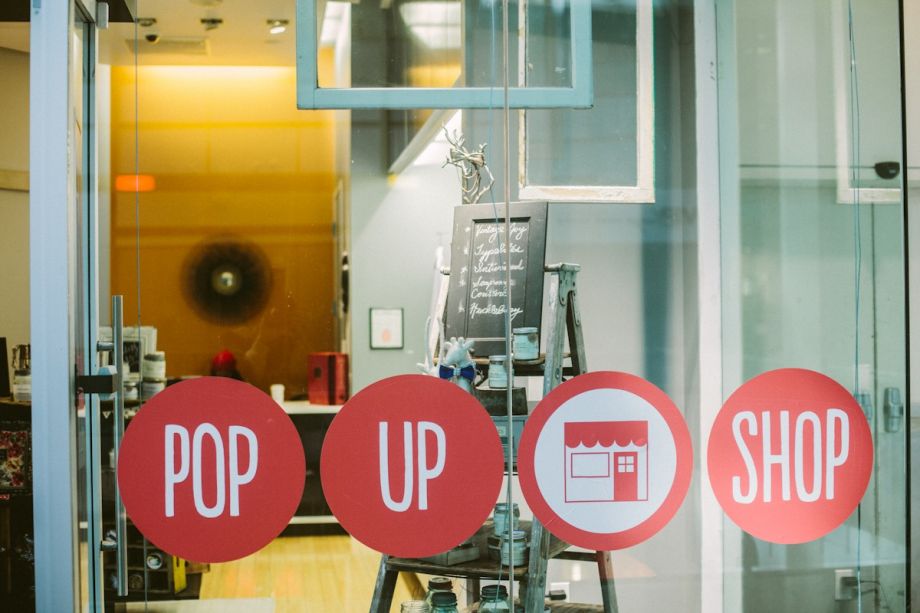Pop-up shops are springing up all over, flocking to a form of temporary retailing that takes advantage of both the bounty of vacant retail space in cities all over and ease with which the Internet and text messages can let would-be customers know when and where a store has sprung up, and when it will be gone. Pop-ups also go by the name “guerilla stores.” And while the term has always been a little aspirational — how revolutionary is a holiday store run by the giant Japanese clothier Uniqlo? — there’s a movement afoot to fully bring pop-up retail out of the wilderness and into mainstream commercial life.
To that end, the San Francisco-based start-up Storefront has just released what it is calling The Ultimate Guide to Opening Up a Pop-Up Shop.
Storefront is itself an online platform for finding and renting short-term retail space, complete with sample contracts and geo-targeted insights into what other stores are nearby your potential space. (Grab, for example, this old subway easement in New York City’s Soho for $750 a day.) Born from the idea of “why shouldn’t there be an easier way to access unused and underutilized retail space?,” Storefront has a vested interest in more pop-ups. But its 32-page guide is also an insightful look into what gets in the way of setting up and pulling down a store in short order.
Long-term renters have long been the Holy Grail of landlords. Businesses that put down deep roots provide financial stability, of course, but they also tend to improve the spaces they rent — and in turn stay long enough to make those improvements worthwhile. Brokers, meanwhile, often work on commission, and the percentage on a day’s rental might not cover the cost of paperwork. “The fear of missing out on a larger payoff,” writes the guide, “is probably behind their reluctance.”
The solution? Sell owners on the idea that temporary shops add their own sort of value. A new store in an unused space might stave off a neighborhood spiral. If that doesn’t work, you might offer to make whatever “free improvements” to the space you can manage while you’re there. It’s helpful, the guide concludes, “to emphasize that having an occupant now could ultimately lead to more demand for the space or an even more lucrative, long-term tenant.”
Pop-up proliferation in the age of online shopping might seem anomalous. But Storefront makes the case that even web-native retailers are realizing that customers might want to touch their products, even if it’s only once or twice.
Take Bonobos, the maker of men’s pants and other clothing whose CEO was, Storefront writes, “zealous” about operating exclusively online. That is, until two salespeople in the lobby of its building generated half a million dollars in sales in six months. Or Indochino, a low-cost custom suit maker. The company’s core business model is “Measure Yourself in 10 Minutes.” But it also offers the Traveling Tailor, who goes from city to city, leaving men with their measurements — and an account on Indochino.com. (Indochino also offers a $75 credit at a local tailor should your suit not fit right.)
Short-term leasing, though, isn’t the only obstacle to a successful pop-up. Lawyers are starting to make noise, for example, about the unique risks to data and merchandise that can come from having only the lightest weight commercial infrastructure in place.
And in the U.K., PopUp Britain has, with the backing of the prime minister and entrepreneurs, encouraged temporary retail as a way of giving new British brands a rare opportunity to get their products onto the High Street. It’s also a way of giving High Streets back retail, if only for a while — Eric Pickles, the U.K.’s secretary of state for communities and local government, has pointed to an 11 percent vacancy rate in market towns. Pickles has been pushing for the country to rethink the laws that limit how buildings can be used, and thus limit pop-ups.
In an age where you can buy nearly anything online, Pickles has said, “the trip to town needs to be worthwhile.”

Nancy Scola is a Washington, DC-based journalist whose work tends to focus on the intersections of technology, politics, and public policy. Shortly after returning from Havana she started as a tech reporter at POLITICO.
















